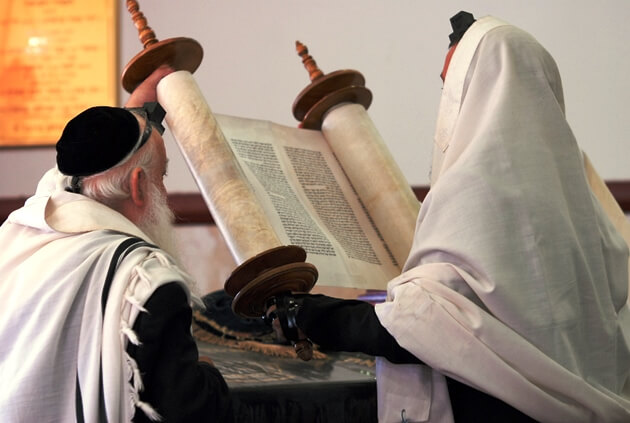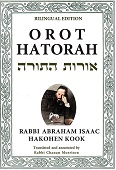
A careful reading of the Torah’s account of Matan Torah indicates that the Jewish people accepted the Torah not once but twice. First it says:
“Moses came and told the people all of God’s words and all of the laws. The entire people responded with a single voice, ‘All the words that God spoke — we will do (Na’aseh).'” (Ex. 24:3)
Immediately afterward, we read:
“Moses wrote down all of God’s words.... He took the book of the covenant and read it to the people. They responded, ‘All that God said, we will do and we will understand — Na’aseh VeNishma.'” (Ex. 24:4,7)
These two passages cannot refer to the same event. In the first account, Moses communicated God’s words orally, while in the second account he read to the people from sefer habrit, the written record of God’s word.
This corresponds to the teaching of the Sages that not one but two Torahs were given at Mount Sinai — the Oral Law and the Written Law. The Jewish people first accepted upon themselves the Oral Torah, and afterward, the Written Torah.
Why Two Torahs?
Why was it necessary for the Torah to be given both orally and in writing? And why did the people accept the Oral Torah with the words, “We will do,” but when accepting the Written Torah they added, “and we will understand”?
There are two aspects to Torah study. The primary goal of Torah is to know how we should conduct ourselves. This is the function of the Oral Law — the Mishnah and the Talmud — which discusses in detail how to apply God’s laws to the diverse situations of life.
The second goal of Torah study is to know the Torah for its own sake, without practical applications. This goal is particularly relevant to the Written Torah. Even if we do not fully understand the words and intent, we still fulfill the mitzvah of Torah study when we read the Written Torah. As the Sages taught: “One should first learn superficially, and later analyze [the material]... even if one does not [initially] understand what one has read” (Avodah Zarah 19a).
There is no value, however, in studying the Oral Torah if it is not understood properly. On the contrary, misreading the Oral Law will lead to errors in Halachic rulings and faulty conduct.
Attaining accurate insight into the practical application of Torah principles requires a breadth and depth of Torah scholarship. It is unreasonable to expect the entire people to reach such a level of erudition. For this reason, the practical side of Torah was transmitted orally. Only those who labor diligently in its study, receiving the traditions from the great scholars of the previous generation, will truly merit this knowledge. If this part of Torah had been committed to writing, many unlearned individuals would be falsely confident in rendering legal decisions, despite not having studied all of the relevant issues.
One might argue that perhaps the entire Torah should have been transmitted orally. But then Torah knowledge would be limited to only a select few. The Written Torah enables all to be exposed to Torah, on whatever level they are capable of comprehending.
Now we can better understand the Torah’s account of Mount Sinai. When they first accepted the Oral Law, the people promised: Na’aseh. This aspect of Torah related to the entire people only in terms of its practical application — “We will do.” It was with regard to the Written Torah, which is intellectually accessible to all, that the people added: VeNishma — “and we will understand.”
First — “We Will Do”
It is natural to want to understand as much as possible and to act according to our understanding. The spiritual greatness of the Jewish people at Mount Sinai was their recognition of the benefit of not committing the Oral Law to writing so that their actions would best fulfill God’s Will. This is the significance of their response, “We will do”: we accept upon ourselves to follow the practical teachings of the scholars and teachers of the Oral Law. Since this acceptance was equally relevant to all, regardless of intellectual capabilities, the verse emphasizes that “the entire people responded with a single voice.”
After they had accepted upon themselves to observe the Torah according to the teachings of the rabbis, Moses then presented them with the Written Torah. We would have expected that the people would have shown particular love for the Written Law, since they could approach this Torah directly. But in an act of spiritual nobility, the Jewish people demonstrated their desire to first obey and observe the applied rulings of the Oral Law. Thus they announced: “We will do,” and only afterward, “we will understand.”
In summary: the Jewish people received two Torahs at Sinai. Moses first gave them the Oral Law, so they could fulfill the Torah’s principal goal — proper conduct in this world. Then Moses transmitted the Written Law, enabling each individual to access Torah at his level, and preparing the people to receive the practical teachings of the Oral Law.
(Silver from the Land of Israel. Adapted from Midbar Shur, pp. 160-165.)





